|
Melbourne. Angela (Sigrid Thornton) is a young hairdresser who dreams of moving elsewhere but cannot afford it, her finances controlled by her mother (Julia Blake). However, one of her clients, the glamorous Madeline (Chantal Contouri) encourages her to try modelling – for which she gets even more money if nude. (When Angela complains that she's flat-chested, Madeline says, "Oh darling, tits went out with Jayne Mansfield.") So she takes part in a topless shoot on a beach run by photographer Linsey (Hugh Keays-Byrne). However, her ex-boyfriend Daryl (Vincent Gil) is on the scene, and she soon finds out she is being stalked...
Snapshot and the simultaneously-released Patrick are the first two of so far eight Indicator releases which fall under the broad banner of Ozploitation. There's a sense that the extras on Patrick also give an outline of Ozploitation and its beginnings as well as supporting the film itself, so I won't repeat them from my review.
Patrick, Antony I. Ginnane's fourth film as producer, had been a success, not so much in Australian cinemas but in terms of sales to other countries. It had helped in his ambitions to make Australian films which would appeal internationally, These would usually in popular genres (thrillers and horror movies especially), and not be the kind of parochial "respectable" film, often a period/historical literary adaptation, that he thought Australia made too many of and which too much attention was paid to. Nicknamed "Gucci" as he wore their suits, he made a point of looking like the big-time producer he was becoming. However, after Patrick, there was a demand for a follow-up, which Ginnane wanted to take to MIFED, the then industry showcase held in Milan.
First up was Centrefold, from a script by Christopher Fitchett, who had previously worked on some of the short features (around fifty minutes) that often served as calling-cards to the industry: his own Melanie and Me (1975) and the very interesting Queensland (1976), which he produced and John Ruane directed. At first Ginnane wanted Richard Franklin to direct, as he had done with Patrick, but US companies were courting him, and the result would be Roadgames (1981), made in Australia for Avco Embassy, on a much bigger budget than Centrefold would have commanded. Simon Wincer was the next director, who like Franklin had had a lot of experience on television, including shows made for Crawford Productions such as Homicide. Wincer however did not like the script. Everett de Roche, who had written Patrick, was approached to write a new one, with the proviso that it be a thriller set in the modelling industry and it incorporate the sinister Mr Whippy ice cream van. De Roche was a very fast writer and turned the script round in three days, polishing it in another two. With a female lead – two in fact – de Roche worked with his wife Chris to gain a female perspective on the story, and she is co-credited. Everett de Roche makes a brief uncredited appearance during the opening credits, as a construction worker in a hard hat.
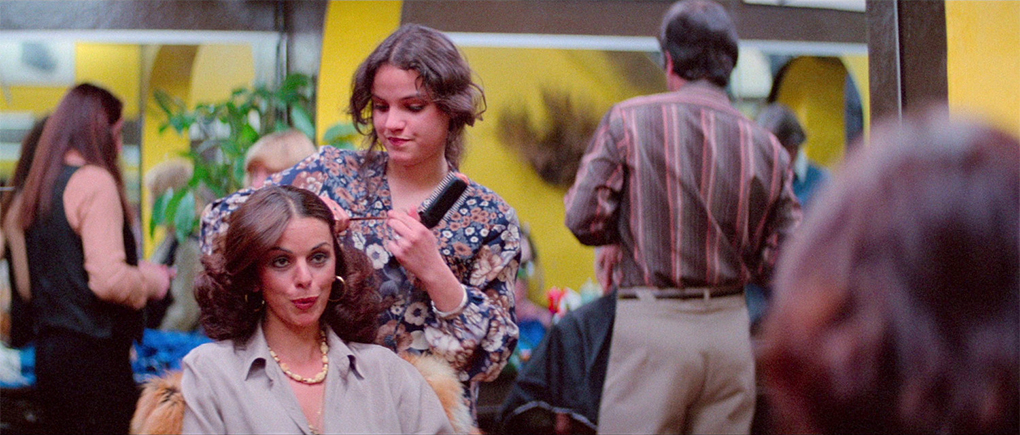
Snapshot was shot in Melbourne on a three-week schedule, for a lower budget than Patrick. (It's generally thought to have been A$300,000, though Ginnane does quote between A$235,000 and A$275,000.) The production mostly used real locations, including Ginnane's own office, with a studio set used for the finale which features an excellent fire stunt carried out by the leading "stuntie" Grant Page.
Unusually for a Ginnane production, all of the cast are Australian, with no one imported from overseas. That was something he did increasingly, sometimes bringing himself into conflict with Australian Equity. Ginnane wanted his films not to be too specifically Australian so that they could play internationally. This means that the cast's accents weren't broad and there was no Aussie slang in the script. The film is clearly set in Melbourne, but not so much that it couldn't be any international city. Unlike Patrick, the film wasn't redubbed into American for its US release. That went out under the title The Day After Halloween, despite the film having nothing to do with that time of year nor more specifically John Carpenter's hit film. (Another title was sometimes used: One More Minute, which is a line delivered in the climactic scene.)
The lead role went to Sigrid Thornton, aged nineteen, though she is third-billed. She had acted from childhood and had had television experience. Before this film she had appeared in two films released in 1977, The FJ Holden and The Getting of Wisdom. Simon Wincer had worked with her on television and she was cast two weeks before production. A previous actress, Lynda Stoner, hadn't worked out, largely due to the topless nudity required in the script. Thornton didn't have an issue with that, putting that down in the extras on this disc to a hippie upbringing. She is the best thing about the film, making Angela a sympathetic lead, her charisma shining through even though Angela is meant at times to be frumpy and awkward. She would soon become a much bigger star, in Australia at least, with her lead role in The Man from Snowy River (1982), at the time the highest-grossing Australian film ever and the biggest film from any source at the local box office in its year.
There is a strong cast behind her, from top-billed Chantal Contouri, relishing the chance to play, as she put it, "a bitch". Robert Bruning is sinister as is Vincent Gil in that Mr Whippy ice cream van (playing a jingling version of "Greensleeves"). Julia Blake, who had had a leading role in Patrick, appears in one scene. Hugh Keays-Byrne, soon to become well known as The Toecutter in Mad Max, contributes a funny role as the rather camp Linsey.
Interestingly, there's a LGBT angle to this film, not just in the revelation that one of the lead characters is bisexual. Homosexuality, male or female, had hardly featured in Australian cinema before then. The only real predecessor is Frank Brittain's black and white drama from 1970, The Set. For obvious censorship reasons the subject doesn't feature before then in any film I've seen, though there is an effeminate store floorwalker in Dad and Dave Come to Town (1938). Snapshot in this regard is rather of its time and occasionally not especially sensitive, with some homophobic slurs thrown about, but the ending (which I won't reveal) is more than a little transgressive.
Despite the low budget, Ginnane was keen for Snapshot to be shot in Scope, and Wincer and cinematographer Vincent Monton agreed. (Ginnane had wanted Patrick to be in Scope, but Richard Franklin and that film's DP Don McAlpine had declined.) This, he felt, would increase the film's production value. A street scene shot in the Melbourne suburb of Carlton used a Panaglide, the Panavision company's then rival to Steadicam, which Monton had previously used on Long Weekend.
The production also used a song by Sherbet, then a successful band in Australia, called "Angela". This plays over a montage of the photoshoot on the beach and features the rather on-the-nose lyrics "Angela, have you gone too far this time?/Angela, it's too late to change your mind". This was released as a single. Sherbet were one of several Australian bands who had just the one overseas hit, which was "Howzat", an Australian number one and a UK number four, which gave them two appearances on Top of the Pops in 1976. The score was by Brian May (not, as may need to be repeated, the Queen guitarist) who was rapidly becoming the leading film composer in Australia at the time. He had begun in television and had made his first feature with the Richard Franklin-directed The True Story of Eskimo Nell (Dick Down Under in the UK). He worked regularly with Franklin and Ginnane, working with them both on Patrick, and came to prominence with his score for Mad Max (1979).
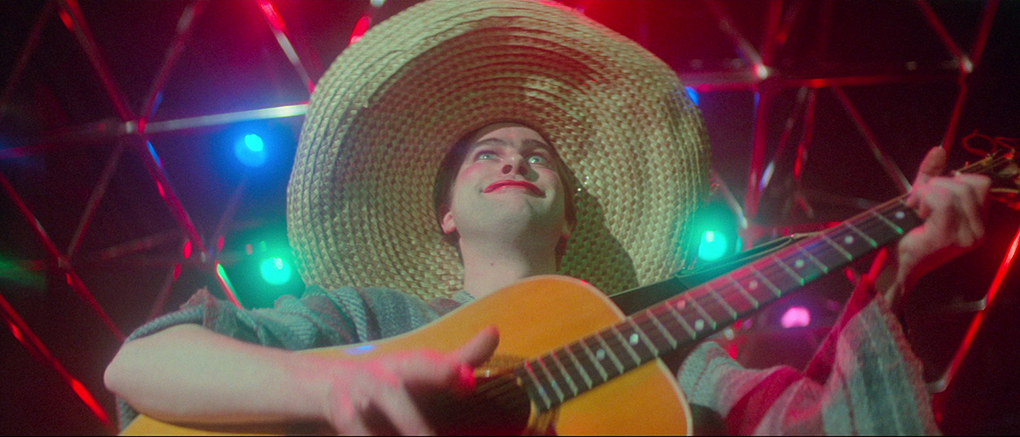
Like Patrick, Snapshot was originally much longer than it ended up. Wincer's cut of the film runs 105 minutes, which is a little long for a thriller (though Patrick was twelve minutes longer that that). In consultation with overseas buyers, the film was shortened to 92, and that's the version which played in cinemas in Australia*. Wincer is on record as being critical of the editing. Both versions are on this disc – for more details, see below – so you can judge for yourself. Some scenes lose shots in their middle and Julia Blake's one scene is awkwardly cut in half. However, other material seems self-indulgent – several more shots and sequences of a cabaret performer, a scene where characters watch a TV set on which Patrick is playing – and a lot of it simply makes an already slow-burning film much longer. We do lose the revelation that Elmer (Robert Bruning) and Madeline are married. A somewhat illogical jump scare (it's not completely clear who was behind it) half an hour from the end reminds us that this film is meant to be a thriller. There are good things about Snapshot – Thornton's performance especially, the look of the production, May's score, the fire stunt near the end – but ultimately it's inferior to Patrick.
Like its predecessor, Snapshot was not successful at the Australian box office, playing just a week in Melbourne and another week in Sydney. At the Australian Film Institute Awards, it was nominated for Best Actress for Sigrid Thornton and Best Cinematography, winning neither: Sigrid Thornton lost to Michele Fawdon for Cathy's Child. Fawdon unbelievably also beat Judy Davis for My Brilliant Career, for which Don McAlpine won over Vincent Monton.
Snapshot was widely sold abroad. However, while the UK had seen Patrick on the big screen and later on the small one, Snapshot was not given a theatrical release and to this day hasn't been shown on British television. Its first British commercial release was on DVD from Britfilms, one of several Australian films that company put out, in what appears to have been the longer cut (100:23 as per the BBFC, allowing for PAL speed-up), so likely panned and scanned.
Snapshot is released on 4K UHD and Blu-ray by Indicator, spine number 431. This is a review of the Blu-ray edition, from a supplied checkdisc and a PDF of the booklet. The film has a 15 certificate.
The film was shot in 35mm colour, with anamorphic lenses. The disc transfer is derived from a 4K and restoration from the original negative, and is in the correct ratio of 2.35:1. The results are excellent, with strong colours, especially reds, and solid blacks and natural grain. The SD inserts in the director's cut (see below) are another story though, but that's no one's fault.
Snapshot was released in cinemas with mono sound. Dolby Stereo had not reached Australian productions by 1978 – the first Australian film with a Dolby soundtrack was Mad Max 2, three years later – and especially not for a low-budget shoot like this. This soundtrack is rendered on both cuts as DTS-HD MA 1.0. There's nothing much to say here: the mix is a professional job of work, with dialogue, music and sound effects well balanced. English hard-of-hearing subtitles are available for both versions, and I didn't spot any errors in them.
There are two versions of Snapshot on this disc: the theatrical cut (running 92:27) and the director's cut (104:50). Film materials for the scenes deleted from the latter no longer exist, so these are derived from a pan-and-scan SD copy. This means that the aspect ratio changes, with a 4:3 image inside a 2.35:1 letterbox, usually but not always in the centre. For an example of this, see the screengrab below.
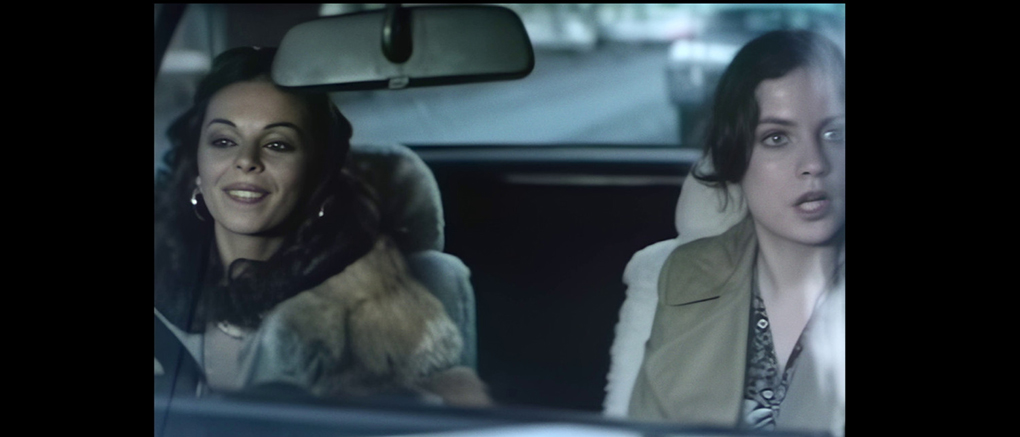
Audio commentary with Simon Wincer, Antony I. Ginnane, Sigrid Thornton and Vincent Monton, with Mark Hartley
This commentary was recorded in 2017 and features the director, producer, lead actress and cinematographer of Snapshot, moderated by Not Quite Hollywood director Mark Hartley. If you play this commentary, over the theatrical cut, there is a caption advising that it is partly mistimed: it begins over a few seconds of black screen and more than once people comment on something that hasn't appeared onscreen yet.
Inevitably with a disc like this, with extras produced at different times and not intended to be gathered together, there will be some repetition particularly if the same person is on several of them. So we do hear some of the same stories, such as the speed at which de Roche wrote the script, the low budget (by comparison, Ginnane's next production, the vampire movie Thirst, cost A$1.2 million) and Ginnane's thoughts on Australia's cinematic output at the time. Ginnane also talks about Melbourne /Sydney rivalry, with Melbourne's industry mostly in television or television-trained: in a way Crawfords was something of an Australian film school, before there actually was one in the country. Ginnane also reveals that having made two quite explicit R-rated sex comedies, the Fantasm films, he found that women wouldn't let their daughters go out with him. So by making a family film (Blue Fire Lady, 1977) he was able to "cleanse" his reputation and get more dates. This is valuable as one of only two contributions by Thornton (addressed as "Siggy" throughout) and Monton to the extras on this disc.
Audio commentary with Antony I. Ginnane and Katarina Leigh Waters
This track is from 2012 and plays over the director's cut, with Ginnane interviewed by horror hostess Katarina Leigh Waters. This is not far off a monologue by Ginnane as Waters doesn't seem very au fait with Australian films and Australian culture. She doesn't ask particularly searching questions, for example "Are you allowed to put boobs in Australian magazines?" It's a pleasant enough chat, though inevitably much of what Ginnane has to say he's said elsewhere. He does talk about how Quentin Tarantino is a fan of Snapshot, having seen it first under the Day After Halloween title and feeling ripped off because the film had clearly nothing to do with Halloween. But then, what's an exploitation film if you aren't ripped off a little?
Audio commentary with Antony I. Ginnane and Jaimie Leonarder
This is from 2018, also over the director's cut, Ginnane with film critic Jaimie Leonarder. Compared to the previous commentary, Leonarder is well informed, able to put Ginnane right on some facts and details. However, Ginnane is wrong to say that Michael Powell didn't make another film in the UK after Peeping Tom. There's some interesting stuff about Italian influences, especially as Patrick and to some extent Snapshot did very well in that country. Ginnane says that he isn't ready to retire as he enjoys filmmaking too much – he'll be seventy-five this year as I write this and is still working.
Producing Snapshot (27:56)
Antony Ginnane again, this time talking to camera in 2017. As so often, you sometimes have a sense of grinding axes when he talks about the films he would rather Australia hadn't made or not made as many of at their budget level – Picnic at Hanging Rock, for example, though that was a commercial success in Australia and the UK, if not in the USA. Occasionally his facts are a little adrift: Snapshot wasn't the first Australian film to feature a female protagonist, though maybe in the thriller genre it was – but even so, Patrick had one. But given his position in the Australian industry then and now, there's a lot worthwhile here. For some reason there's music playing faintly in the background throughout.
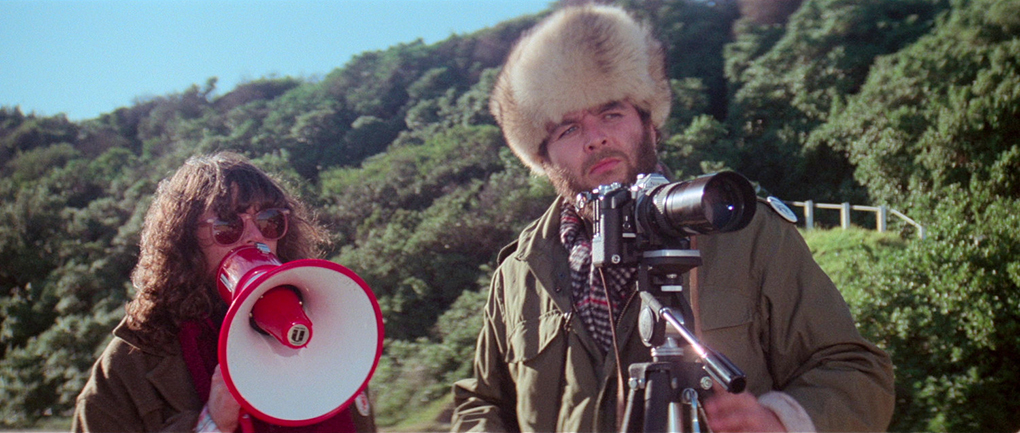
Not Quite Hollywood interviews (39:24)
Mark Hartley's 2008 documentary has proven itself a rich source of interview material in its outtakes, for this and many other disc releases. Here we have seven interviews, many of them quite brief, with a Play All option.
First up is Sigrid Thornton (12:26), who found the prospect of playing the lead in only her third feature film exciting. She had no issues with nudity but does find it difficult to watch herself on screen. She isn't uncritical, saying that the short writing time of the script (and only one real draft) does show a bit and she did wonder if Everett de Roche was on drugs. She talks about her co-stars Chantal Contouri and Hugh Keays-Byrne and also about the filming of the fire stunt. She also mentions working with her future (and current) husband Tom Burstall, and a scene being in shot in the office of her late father-in-law, pioneering 1970s director Tim Burstall.
Antony Ginnane is next (12:30) and, at the risk of repeating myself, while this is interesting in isolation you will have heard it all elsewhere on this disc. He does talk about how the film came about, as far back as the proposed Centrefold, with Lynda Stoner originally to play the lead.
Talking of Lynda Stoner, she's very briefly next (0:45), talking about a film she didn't make. She had made it clear that she wasn't willing to appear nude, so what happened when a script turned up requiring nudity? She's clearly no fan of Antony Ginnane. I wonder if Stoner's candid comments about Turkey Shoot, which she did make for Ginnane, will be on Indicator's forthcoming release?
Simon Wincer follows (6:45) and he seems to have mellowed on his own film since his audio interview at the time of release (see below), describing it as not his favourite but worth it. He talks about working with Sigrid Thornton, whom he had worked with before on television.
Everett de Roche (2:02) talks about how the script was a rush job, fast even by his standards. He claims that Antony Ginnane tried to write it before asking him to do it.
Vincent Monton's contribution (2:47) is mostly technical, talking about the rapid shoot which was enabled, he said, by his and Wincer's television training. He too had worked with Sigrid Thornton on an episode of Homicide – her screen debut at age thirteen.
Finally first assistant director Tom Burstall (2:07) backs up Monton by describing how his television experience enabled the film to be made, also his documentary experience. And he got to work with his future wife.
Audio interview with Simon Wincer (16:35)
This was recorded in 1979 with Wincer interviewed by two unidentified journalists, while he was making Harlequin (released in 1980). There are plot spoilers for Snapshot. Wincer is surprisingly critical (presumably not under contract not to be) about his own film which was then either on release or recently had been. He considers that the film wasn't promoted enough. It had been too long, but he feels that the edits were wrong, removing too many lighter elements, and that the script should have had a few more drafts.
Audio interview with Grant Page (2:14)
A brief piece from 2008, which plays over the fire stunt from the film's finale. Page talks about the technicalities of setting up and the performing of the stunt, which included his being swathed in fire-retardant gel and Sigrid Thornton likewise. The scene was shot on a long lens, so he and Thornton were further apart than they look on screen. A spoiler warning for this, obviously.
The Trans-Pacific Mode (10:00)
Dr Stephen Morgan is a London-based Australian academic and cinema specialist. There is a sense that his piece on the Patrick disc was as much an overview of the roots of Ozploitation as it was a discussion of that film, so he doesn't repeat himself on this much shorter piece. He begins by pointing out that 1979 was a banner year for the new Australian cinema, which saw the release of My Brilliant Career, The Odd Angry Shot and, relevant to Ozploitation, Mad Max, Thirst and the present film, and many others now rather unfairly hard to see. Talking about Snapshot, he does point out Simon Wincer's future penchant for horse movies (Phar Lap, The Lighthorsemen, Quigley Down Under, The Young Black Stallion – not to forget killer whales in Free Willy). Be advised that this item includes part of the strobe-lighting sequence from Patrick.
The Day After Halloween title sequence (2:28)
As it says, taken from a rather noisy source but at least fully letterboxed.
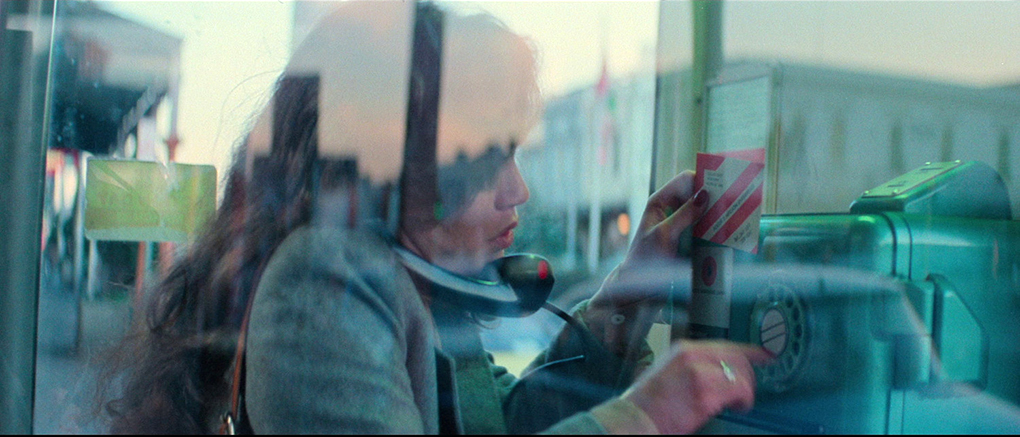
Trailers and TV spots (5:39)
With a Play All option, we have a rather lengthy Australian trailer (3:41) which features some of Sherbet on the soundtrack. This is followed by the shorter US Day After Halloween trailer (1:06), which calls the film "a new tick on the horror calendar", and what appear to be two American TV spots (0:25 and 0:26).
Image galleries
Three of them. The first features 170 items of promotional material, stills both black and white and colour and poster designs, one of which censors the nudity by printing the film title over Sigrid Thornton's breasts. The second comprises behind-the-scenes shots, black and white and colour. The third gallery features the dialogue script, with cues precise to the minutes and seconds for speech and sound effects.
Booklet
Available with this limited edition, Indicator's booklet runs to seventy-six pages. As ever, if you have any interest in this release, do buy the limited edition as any future standard edition won't include this booklet. It's of value for many reasons, not least by featuring someone who isn't in any of the on-disc extras and is no longer with us.
First up is a new essay by Sydney-based film critic Ian Barr. The first thing he mentions is the first thing you see: the blinding reds in the film's colour scheme, not least in HD or UHD. While admitting that Snapshot is a little slack as a thriller, he finds a lot of interest in it, even dropping John Berger's name in its discussion of photography and women being looked at. Barr gets the O word (as he calls it) out of the way with talk of the early-1970s Ocker comedies and the slew of films made under the 10BA tax incentive in the 1980s. If there are key Ozploitation personnel, they would be Antony Ginnane (Barr isn't alone in comparing him to Roger Corman) and Everett de Roche, who worked together or separately on many key titles. A good essay that pretty much covers all bases.
Simon Wincer is next, interviewed by Peter Beilby and Scott Murray in the December 1979/January 1980 issue of Cinema Papers. He talks about disliking the Centrefold script – liking only the modelling setting and the Mr Whippy van – and suggesting that Everett de Roche write a new script, which of course he quickly did. Much as he says in his audio interview (see above), he was unhappy about the cutting and is not fond of the film, blaming it in part of the short schedule and post-production time. With Harlequin, he had eight weeks of post-production instead of one. By contrast, in television he had short shooting schedules but more precisely timed scripts.
This is followed by another extract from Antony Ginnane's unpublished autobiography, almost as long as the equivalent in the Patrick release booklet. As before, it's very detailed, rather dry and occasionally rather contentious. He does tell an alarming story of dinner in an overpriced Milan restaurant during MIFED, when the place was raided by men in ski masks brandishing weapons.
Back to Cinema Papers and the February/March 1980 issue, and Everett de Roche is interviewed by Paul Davies. This is more of a career overview up to this point, when de Roche was working on Roadgames and liaising with Richard Franklin who was in Fiji working on (but not directing) The Blue Lagoon. De Roche puts his prolific workrate due to not being able to afford to turn work down and having only two projects on the go would make him anxious about unemployment. There's a lot here of interest about Long Weekend, which de Roche feels is flawed, and Patrick as well as Snapshot. That film is the only screen credit for his wife Chris, but he says he constantly uses her as a sounding board. He also talks about Race for the Yankee Zephyr, which Richard Franklin was involved with but which was eventually directed by David Hemmings. He also shares his views on Australian film and television and opportunities for writers in both.
We stay with Cinema Papers, going back to August/September 1978, where critic Ivan Hutchinson interviews Brian May, making this the composer's only appearance in this disc's extras. At this time, due to his work on The True History of Eskimo Nell, he had begun to work on American films as well as Australians. There's not much for musicians about his methods – he composes on the piano and prefers to conduct his own scores. He's about to work on a film with a symphonic score and another with a jazz-rock score, respectively Mad Max and Snapshot. I wonder how they turned out?
The booklet also contains film cast and crew credits and plenty of stills.
Snapshot is a minor Ozploitation entry, but still has quite a few points of interest. As with Patrick, Indicator's release is an exemplary presentation of it, though in service of a lesser film.
|